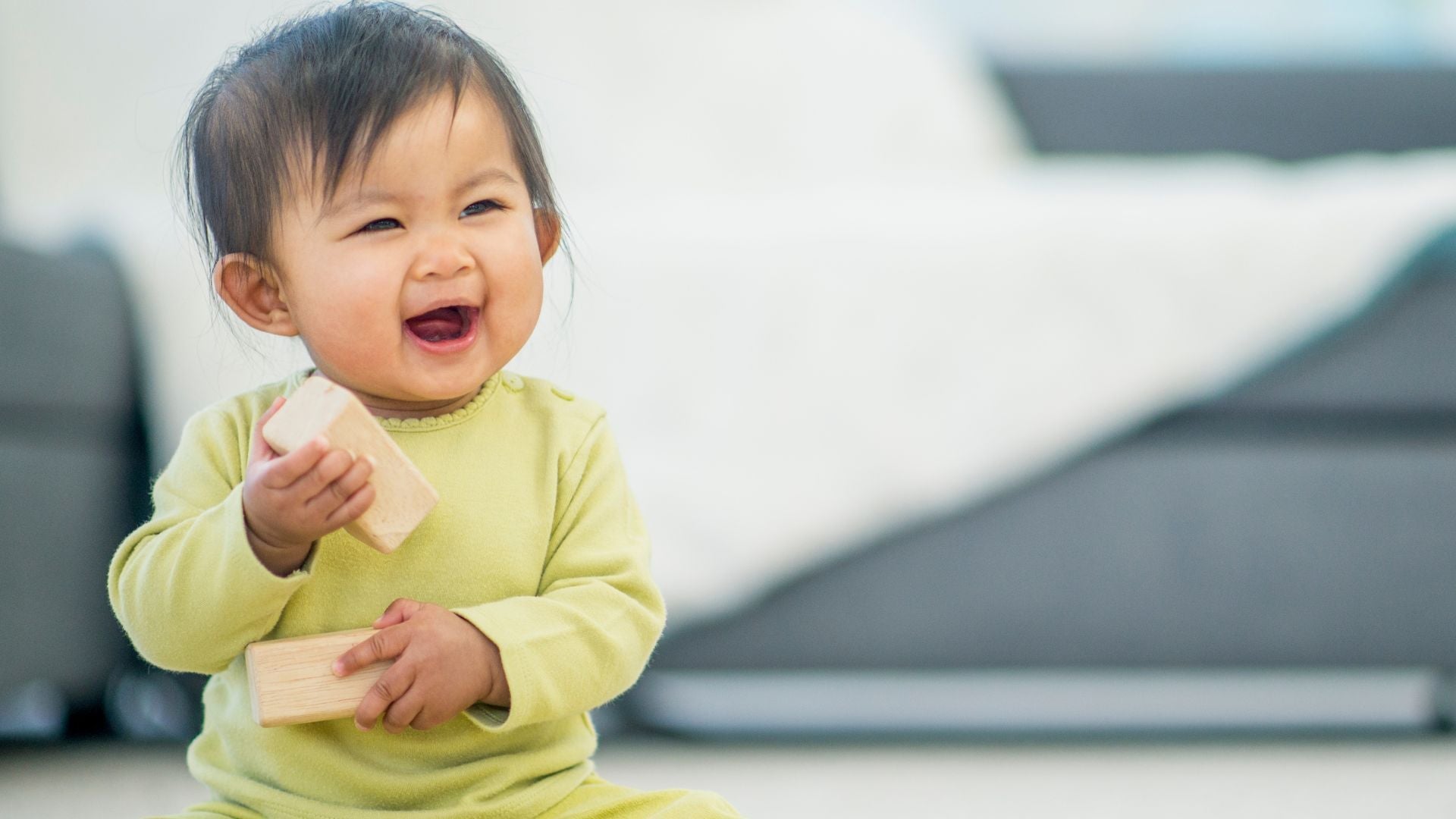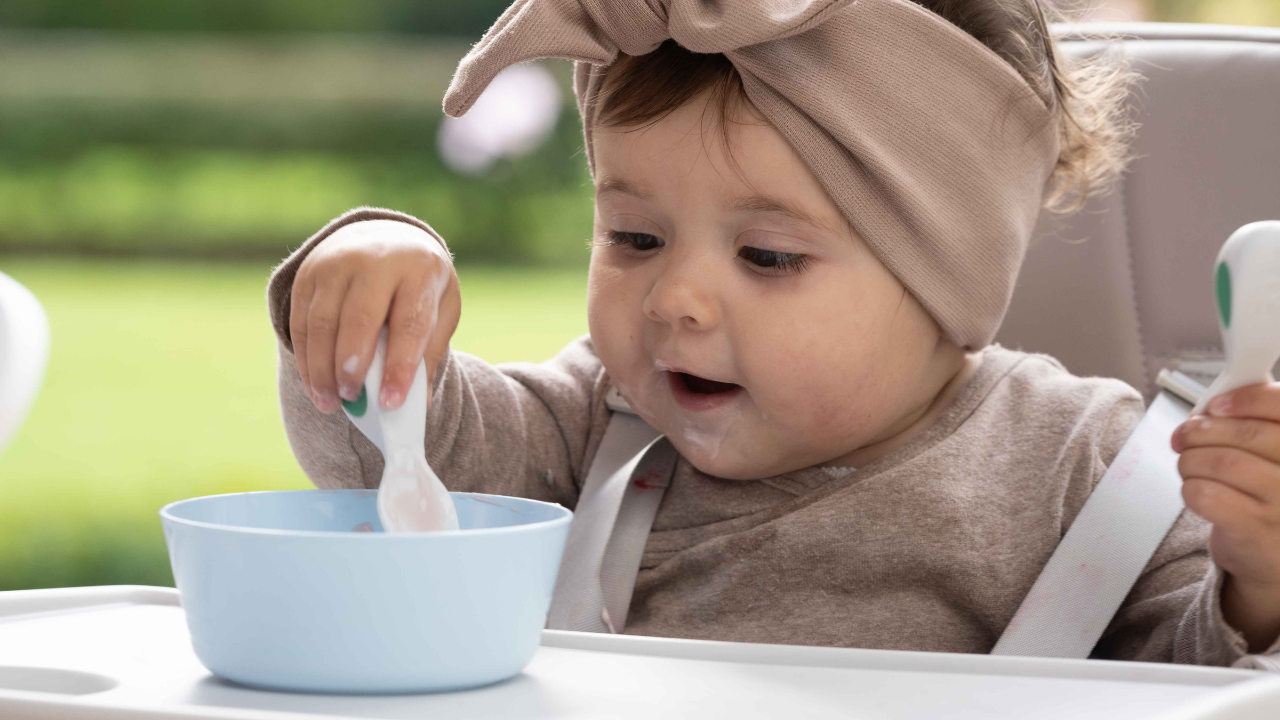Watching your little one grasp a spoon for the first time is like witnessing a tiny superhero discover their powers. Toddler self-feeding is an exciting milestone that marks a big step towards independence. But when should you start, and how can you make this journey smoother for both you and your mini-me?
In this guide, we'll explore the wonderful world of toddler self-feeding, including:
- recognising readiness signs
- choosing the right tools
- some expert tips
- answers common questions
- and hopefully, give you the confidence to embrace the beautiful mess that comes with this new skill.
So, grab a cuppa (and maybe a washcloth), and let's dive in!
Understanding the readiness signs

Before we jump into the 'how', let's talk about the 'when'. While these readiness signs often begin in infancy, they lay the groundwork for the more advanced self-feeding skills that develop during the toddler years. As your child grows from baby to toddler, you'll see these early abilities refine and expand.
Every child is unique, but there are some common signs that your baby might be ready to self-feed:
- Showing interest in your food or trying to grab your utensils
- Developing hand-eye coordination, like picking up small objects
- Sitting upright independently for extended periods
- Improved chewing skills and ability to handle different textures
Most children start showing these signs between 6-8 months, but remember, there's no one-size-fits-all timeline. Some might be eager to start at 6 months, while others might need a bit more time. And that's perfectly okay!
Introducing finger foods: The first step to independence

Finger foods are often the gateway to self-feeding. They're easy to grasp, fun to explore, and a great way to introduce your toddler to different textures and flavours. Here are some toddler-friendly recipes to get you started:
- Soft fruits like banana slices or ripe pear
- Steamed vegetable sticks (think carrots or sweet potato)
- Small pieces of cheese or toast
- Cooked pasta shapes
Remember, safety first! Always supervise your little one during meals and avoid choking hazards like whole grapes or hard vegetables.
Encouraging independence: Embrace the mess!

Now, let's address the elephant in the room - yes, self-feeding can be messy. But this mess is a sign of learning and exploration. Here's how you can encourage independence while reducing mess:
- Let them take the lead: Resist the urge to intervene too quickly. Learning takes time and practice.
- Make mealtimes fun: Use colourful plates, sing silly songs, or make faces with the food.
- Be patient: Rome wasn't built in a day, and neither is a self-feeding toddler.
- Celebrate small victories: Every successful bite is a win!
Remember, the goal isn't perfection, it's progress. Your toddler might alternate between using utensils and their hands, and that's completely normal.
Choosing the right tools: Setting up for success

The right utensils can make a world of difference in your toddler's self-feeding journey. Here's what to look for:
- Toddler cutlery: Look for short handles and soft grips that are easy for little hands to hold.
- Non-slip toddler plate: These can help prevent spills and frustration.
- Open cups: Yes, they might be messy at first, but they're great for developing motor skills.
Remember, practice makes perfect. The more opportunities your toddler has to use these tools, the quicker they'll master them.
Being patient and supportive: The secret ingredient
Self-feeding is a learning process, and like any new skill, it takes time. Here are some tips to keep things positive:
- Make mealtimes relaxed and enjoyable: Avoid pressure or battles over food.
- Offer guidance when needed: Show them how to hold a fork, knife or spoon - or guide their hand, but let them do the work.
- Be consistent: Regular practice helps build confidence and skills.
- Lead by example: Eat together as a family and let them see how you use utensils.
Remember, every child develops at their own pace. If you have concerns about your toddler's progress, don't hesitate to chat with your healthcare provider.
FAQs: Your toddler self-feeding questions answered

Q: At what age should my toddler be able to use a spoon independently?
A: Most toddlers master using a spoon between 14-24 months, but some might take a bit longer. It's a gradual process, so don't worry if your 2-year-old is still perfecting their technique!
That said, starting your little one off with baby cutlery during those first weaning attempts can be a game-changer. These clever spoons are designed to fit tiny hands just right, making it easier for babies to get to grips with this whole eating business.
By using an ergonomic spoon from the start, many children become familiar with utensil use earlier, which can lead to mastering spoon skills at a younger age. Some parents report their little ones confidently using spoons by 12-18 months when they've had practice with ergonomic utensils.
Q: Should I still be feeding my 2-year-old?
A: The journey to independent eating starts much earlier than you might think! Introducing toddler-friendly cutlery from the beginning of weaning at around 6 months can make a world of difference. As your little one grows, transitioning to toddler-appropriate utensils at around 12 months helps maintain this progress.
With tools designed for their developing skills, many children quickly become confident self-feeders. By age 2, most toddlers using age-appropriate utensils are happily feeding themselves, often needing help only with cutting food or managing trickier textures.
Q: My toddler prefers to use their hands. Should I be concerned?
A: Not at all! Many toddlers alternate between utensils and hands, even when they can use a spoon. It's often easier and more efficient for them. As long as they're eating and exploring different foods, they're on the right track.
It's a good idea to keep placing child-friendly cutlery at every mealtime. This gives your little one plenty of opportunities to practise and get comfortable with using them. Some days they might ignore the spoon entirely, and other days they might surprise you with their newfound skills!
Q: How can I reduce the mess during self-feeding?
A: While some mess is inevitable (and beneficial for learning), you can minimise it by:
- Using bibs or smocks
- Placing a washable mat under the highchair
- Offering small portions at a time
- Using suction bowls with high sides
- Using curved, non-slip toddler plates to help keep food on the plate and plates on the table.
Remember, a messy eater is often a learning eater!
Wrapping up: Embrace the journey
Toddler self-feeding is an exciting milestone that opens up a world of independence and exploration for your little one. While it might come with its share of spills and messes, the pride on your toddler's face when they successfully navigate a spoonful of food to their mouth is priceless.
Remember, every child's journey is unique. Some might be eager self-feeders from the start, while others might need a bit more time and encouragement. The key is to stay patient, keep things positive, and celebrate every small victory along the way.
If you're looking for more tips on creating positive mealtime experiences or want to explore toddler-friendly cutlery designed to support self-feeding, we're here to help. Together, we can turn mealtimes into magical moments of learning and bonding. Happy feeding!




Leave a comment
This site is protected by hCaptcha and the hCaptcha Privacy Policy and Terms of Service apply.